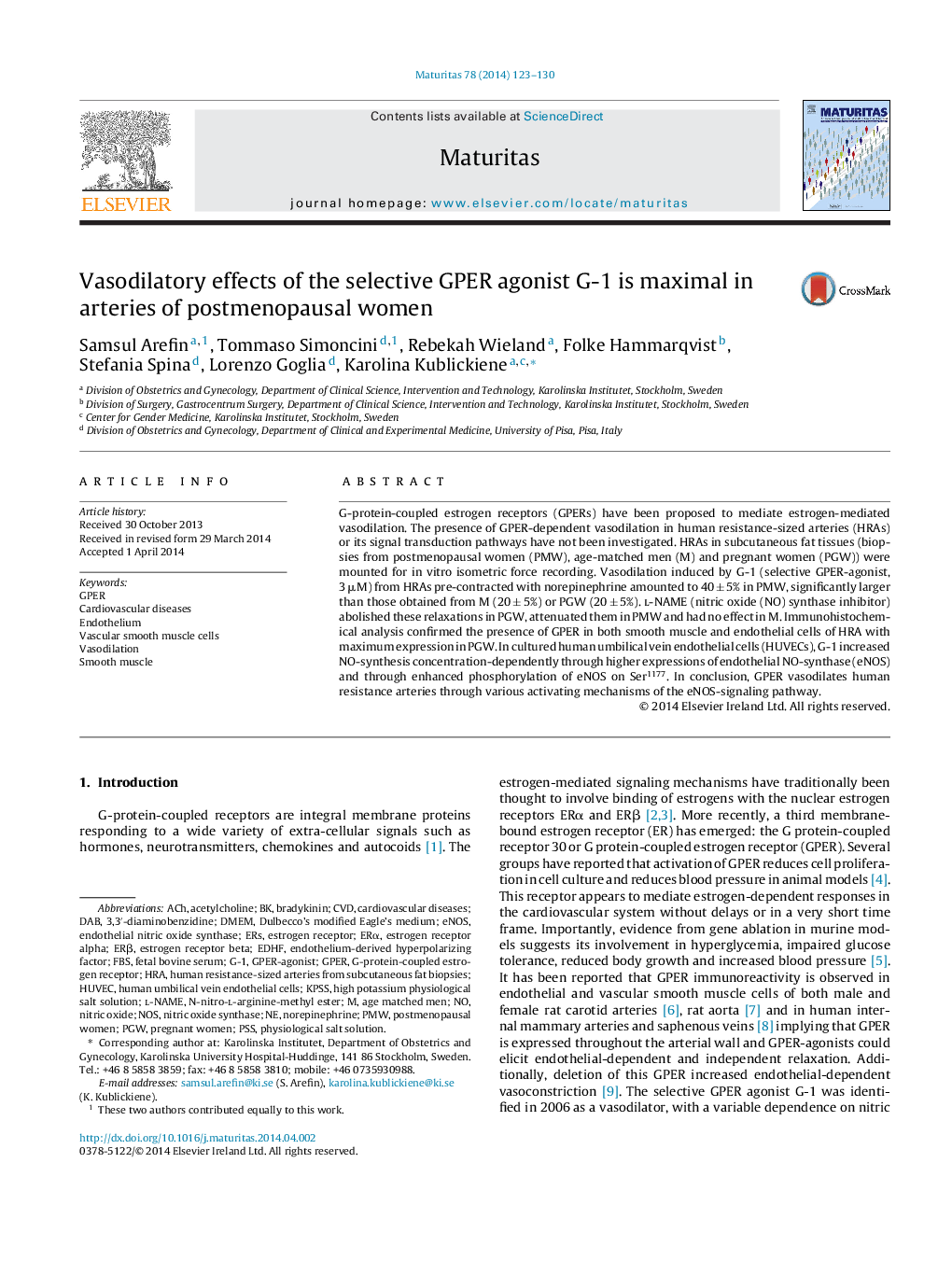| Article ID | Journal | Published Year | Pages | File Type |
|---|---|---|---|---|
| 10743535 | Maturitas | 2014 | 8 Pages |
Abstract
G-protein-coupled estrogen receptors (GPERs) have been proposed to mediate estrogen-mediated vasodilation. The presence of GPER-dependent vasodilation in human resistance-sized arteries (HRAs) or its signal transduction pathways have not been investigated. HRAs in subcutaneous fat tissues (biopsies from postmenopausal women (PMW), age-matched men (M) and pregnant women (PGW)) were mounted for in vitro isometric force recording. Vasodilation induced by G-1 (selective GPER-agonist, 3 μM) from HRAs pre-contracted with norepinephrine amounted to 40 ± 5% in PMW, significantly larger than those obtained from M (20 ± 5%) or PGW (20 ± 5%). l-NAME (nitric oxide (NO) synthase inhibitor) abolished these relaxations in PGW, attenuated them in PMW and had no effect in M. Immunohistochemical analysis confirmed the presence of GPER in both smooth muscle and endothelial cells of HRA with maximum expression in PGW. In cultured human umbilical vein endothelial cells (HUVECs), G-1 increased NO-synthesis concentration-dependently through higher expressions of endothelial NO-synthase (eNOS) and through enhanced phosphorylation of eNOS on Ser1177. In conclusion, GPER vasodilates human resistance arteries through various activating mechanisms of the eNOS-signaling pathway.
Keywords
DABPMWKPSSEDHFGPERG-1ERβERαHRAeNOSHUVECNOSERSDMEMPSSFBS3,3′-diaminobenzidinel-NAMEDulbecco's modified Eagle's mediumAChvasodilationAcetylcholineEndotheliumbradykininCardiovascular diseasesCVDPregnant womenPostmenopausal womenfetal bovine serumHuman umbilical vein endothelial cellsVascular smooth muscle cellsendothelial nitric oxide synthasesmooth muscle Endothelium-derived hyperpolarizing factorphysiological salt solutionnorepinephrineNitric oxidenitric oxide synthaseEstrogen receptorEstrogen receptor alphaEstrogen receptor beta
Related Topics
Life Sciences
Biochemistry, Genetics and Molecular Biology
Ageing
Authors
Samsul Arefin, Tommaso Simoncini, Rebekah Wieland, Folke Hammarqvist, Stefania Spina, Lorenzo Goglia, Karolina Kublickiene,
